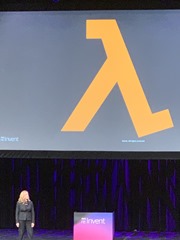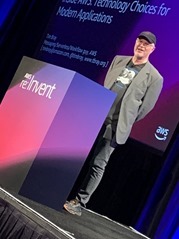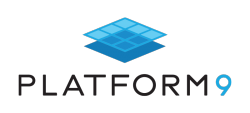AWS re:Invent 2018: A Serverless Journey: AWS Lambda Under the Hood – SRV409
 Marc Brooker & Holly Mesrobian from AWS
Marc Brooker & Holly Mesrobian from AWS
This looked like a super interesting session as AWS doesn’t often let you peek under the hood of how it runs its infrastructure. Of all the AWS services, Lambda is arguably the most interesting under the hood as the whole point of Lambda is you don’t have to worry about what’s underneath that hood and there’s a big engine!
Running Highly Available Large Scale systems is a lot of work.
- needs load-balancing
- scale up and down
- handling failures
When you use Lambda as part of a serverless platform, you don’t need to provision, manage, and scale any servers although the servers are obviously there. As a developer you don’t need to concern yourself with any of the undifferentiated heavy lifting but there’s a very sophisticated architecture underneath to make that abstraction work.
Holly and Marc went through how AWS designed one of its fastest growing services. Lambda processes trillions of requests for customers across the world.




Recent Comments